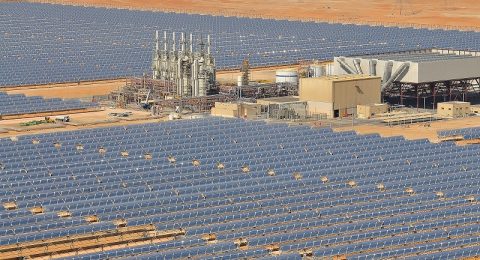Industrial mining serves as the cornerstone of modern society. Everything that isn’t grown as a crop is ultimately derived from minerals or petroleum extracted from the Earth. However, mining is costly and has been associated with numerous environmental challenges, mainly related to toxic mine waste and the destruction of habitats.
In the quest for sustainable development, technologies such as In-situ leaching (ISL) are being adopted for their innovative characteristics. In-situ leaching, also called In-situ recovery (ISR), is an approach to mineral extraction that combines drilling, rock fracturing, and chemical leaching directly at the drilling site, creating minimal surface disturbance of the landscape. This is particularly beneficial nowadays in areas with low-grade ores or that contain rare earth minerals.
Rare earth minerals (REMs) is a term that describes a group of 17 elements in the periodic table that have unique catalytic, metallurgical, nuclear, electrical, magnetic and luminescent properties.
“Their name came from the fact that they are not rare in appearance, but they appear in low concentrations. That’s why they get names of critical and rare,” said Mariam Yassin, Sustainable Manufacturing Technologies Assistant General Manager at ECHEM, during the technical conference that was held last month on the sideline of Egypt Mining Forum.
“REMs play a critical role in the development of modern technologies that are efficient in addressing climate change,” she said. “To control all climate action, we need rare earth elements,” she explained.
REMs are often used in electronics, such as laptops and smartphones. Rare earth oxides, such as neodymium and praseodymium are used in magnets, aircraft engines and green technologies, including wind turbines and electric vehicles. Samarium and dysprosium are also used in rare earth magnets. Phosphor is found in rare earth elements such as europium, terbium, and yttrium, which are used in lighting, as are cerium, lanthanum, and gadolinium.
ISL Early adoption and application
The first notable application of ISL was in the late 1960s, particularly in the US. The technique was used in the Colorado Plateau region to recover uranium from ore bodies buried underground.
By the 1970s, ISL was adopted for uranium extraction in other regions, such as Canada and Australia.
The technique gained popularity due to its lower environmental impact compared to traditional mining methods. In the following decades, ISL technology was adapted for the extraction of other metals, particularly copper.
ISL process
The In-situ leaching process consists of several sequential steps, starting with the injection of a specially prepared solution. This solution, a mix of water and specific chemicals, is pumped into the mineral deposit through specially drilled injection wells. This initial step is crucial as it sets the stage for the subsequent dissolution of the target mineral.
Once the solution is injected, it flows through the mineral deposit and interacts with the minerals present, effectively dissolving the targeted material. This step is essential for the recovery process, as it transforms solid minerals into a soluble form that can be easily extracted.
The solution, laden with dissolved minerals, is then pumped back to the surface through recovery wells, marking the transition from dissolution to mineral recovery.
At the surface, the dissolved minerals are separated from the solution using various chemical or physical processes. This extraction is critical to obtaining the desired mineral in a usable form.
After extraction, the solution undergoes treatment to remove impurities and adjust its composition before being recycled for reuse in the injection process. This recycling minimizes waste and enhances the overall efficiency of the ISR method. Following the mineral extraction and solution recycling, the process moves toward mine closure.
Once the extraction is completed, the wells are flushed with clean water to remove any remaining residues from the solution. Afterward, they are securely sealed to prevent any potential leaks or contamination of the surrounding environment.
Advantages of ISL
The main advantage of ISL is the fact that it skips the difficult and costly step of excavating large volumes of material. This means ISL mines require much less infrastructure and far fewer employees, keeping costs down and preventing workplace accidents.
Moreover, the lack of excavation also means no giant open pits or sprawling, potentially toxic tailings and waste rock piles.
There are also major reductions in greenhouse gas emissions because ISL doesn’t require large fleets of diesel-powered equipment or energy-hungry transportation and grinding of ore.
Before ISL Application
There are several basic requirements for utilizing ISL. First, the host rocks must be permeable enough for the solution to be pumped through it. This means that ISL is generally restricted to relatively shallow deposits hosted in unconsolidated sediments (i.e. dirt), or sedimentary rocks.
Second, the element of interest, and the mineral(s) it’s hosted in, must be soluble enough to be dissolved. In principle, anything can be dissolved by the right chemical, but in practice, only some minerals can be dissolved by readily available chemical solutions quickly enough to make ISL practical.
Third, the flow of the solution must be controllable. This generally means the deposit has to be located below the water table and contained by impermeable usually clay-rich rocks.
Finally, the deposit must not contain any minerals that will prematurely neutralize or otherwise react negatively with the solution.
With its advantages in cost reduction, safety, and preserving the landscape, ISL plays a pivotal role in meeting the mineral needs of the future in a responsible and sustainable manner.








